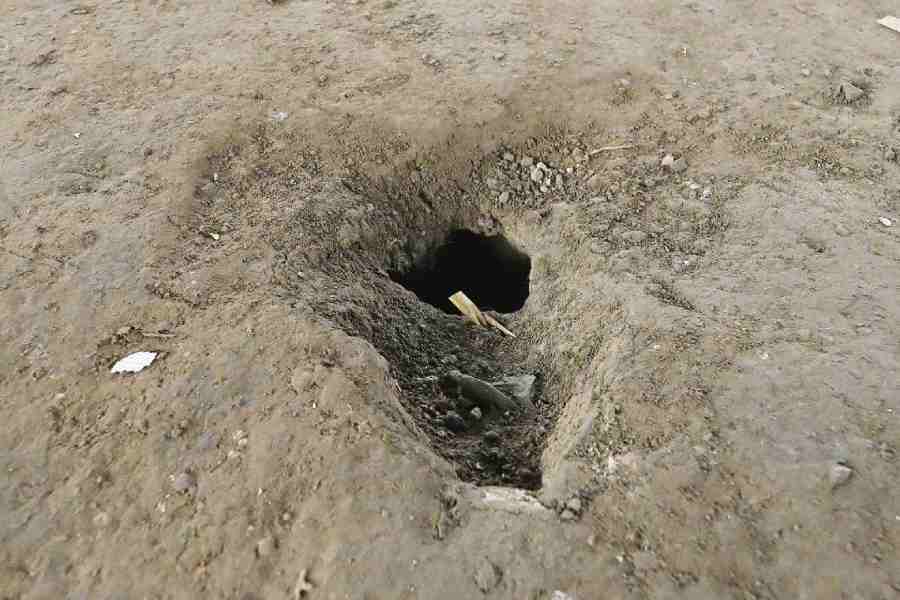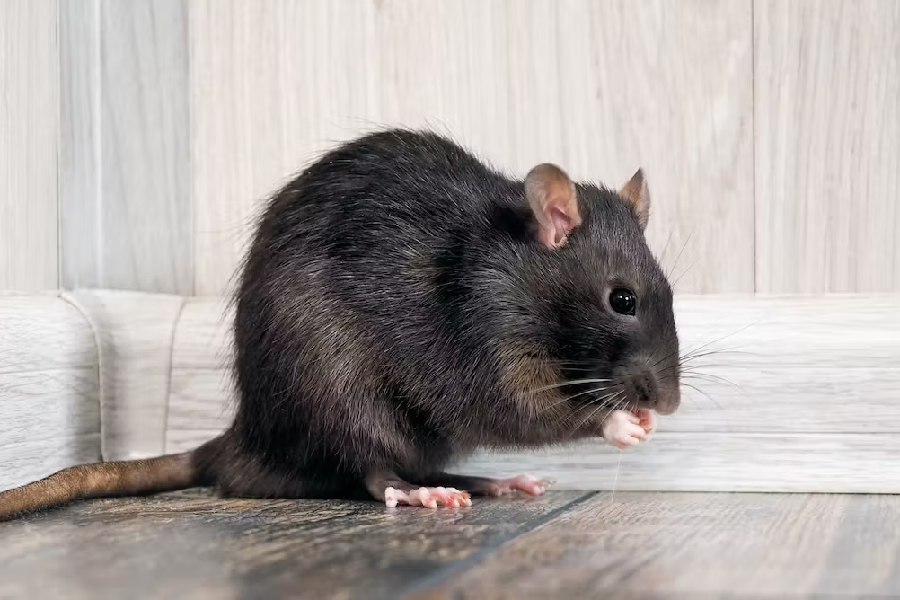A dark underground force is silently eating away at Kolkata’s foundations. Call it the Rats that Might Sink the Ship.
Kolkata’s rodent population swells in size with each passing day, mainly because the city’s population keeps growing, which means more food, more waste — and more waste food tossed casually on the streetsides.
Gnawing at bridges, causing pavements and roads to subside, invading homes, chewing holes into brick walls and the foundations of giant edifices, and damaging utility cables, nibble by nibble, the vermin keep digging deep. Not to speak of the health hazards they pose.
Some of Kolkata’s rats are bigger than cats. Ecologists say they vary between 60mm and 700mm from head to tail.
Many threats
The rats pierce through the moist and weakened walls of old houses, said an architect with experience in restoring such buildings. It’s a serious concern in a city known for cave-ins of dilapidated houses.
Officials who maintain public infrastructure in Kolkata said many pavements had undulating surfaces because rats had burrowed through the soil underneath, causing the paver blocks to lose their “compactness”.
An official of the CESC, which provides electricity to the city, said the rodents cause frequent disruptions in distribution boxes, which receive power from transformers and send it to homes. Each box usually caters to half-a-dozen small neighbourhoods, the official said.
Whenever a short circuit happens, the households that depend on the box go without power till repairs are done, he said.
“Rats bite through the road surface to enter the boxes from below. A rat can come in contact with a live wire and cause a short circuit. Or it can accumulate soil and plastic inside the box. Plastic triggers a flash when it comes in contact with live wire,” he said.
Suvra Narayan Sil, a structural engineer who has helped restore many old buildings in Kolkata, said that one way to keep rats from invading a home or a public building was to mix glass shards with soil. Glass is so thick that rats cannot cut through them.
“Many old houses and heritage buildings have the same problem: they are made of brick, lime and mortar. With time, the walls have become damp,” Sil said.
The bricks and mortar in damp walls have reduced strength and compactness.
“Rats can invade through walls that have lost their strength. It is difficult to do so in modern houses where cement and concrete are used,” Sil said.
Danger spots
A stretch of the pavement near the Exide crossing has a wavy surface because rats have burrowed under it. An official of the Kolkata Municipal Corporation (KMC), custodian of the city’s roads and pavements, said rats had created similar problems in many other localities.
“The rats drill holes in the soil under the paver blocks. This affects the compactness of the soil underneath, and the paver blocks sink. The pavements become undulating. Sometimes this happens repeatedly even after repairs,” the KMC official said.
A year ago, the civic body had pumped water into a tunnel that rats had dug under the pavement in Triangular Park, along Rashbehari Avenue. “Dozens of rats ran out of the tunnel,” the official said.
A pest-control agency said it had caught around 150 rats from residential and commercial establishments in Kolkata in September. There are hundreds of pest control agencies across the city.
Rats have also dug up the soil under the slopes of the Dhakuria bridge.
The bridge’s deck or main surface — which lies directly over the railway tracks — is supported by piers and is much more stable. But the gap between the approach roads and the ground is filled with sand and soil, an engineer said.
A few years ago, an inspection revealed that rats had made large holes in this supporting structure, making the approach roads vulnerable, he added.
Food waste
The food waste that the city dumps on its roads is a lifeline for the rodents.
In July, mayor Firhad Hakim had flagged the threat: “Keep the food waste packed in your place and hand it to the waste cleaner. Stop throwing food waste on roads or pavements. The rats will come if there is food for them.”
Prakash Sasidharan, managing director of Orion Pest Solutions, which caters to hotels, factories, malls, housing societies and government establishments across the country, said: “From housing societies to hotels and roadside eateries, there is no dearth of food waste in a city like Kolkata. Not segregated properly, it provides a solid food source to the rat population.”
Rats proliferate fast, too.
“These rodents are classified as an r-selected species, known for rapid procreation. There is a linear link between the resources they can access and their population growth,” said Silanjan Bhattacharyya, ecologist and professor at the West Bengal State University, who has researched rodents.
Ecologists blame the rapid surge in the rodent population also to a slide in the numbers of certain feral mammals, birds and snakes that feed on rats.
Diseases
Rats and mice, historically infamous for causing disastrous plagues, are carriers of many diseases.
“These diseases can spread to people directly through handling of rodents; contact with rodent feces (poop), urine, or saliva (such as through breathing in air or eating food that is contaminated with rodent waste); or rodent bites,” says the website of the US-based Centers for Disease Control and Prevention.
Leptospirosis, a bacterial infection that spreads via the urine of infected animals such as rats and cattle, has killed several people in Mumbai in the past few years.
“Rats may bite humans. They may eat food and contaminate it and help spread infections. Since they thrive in very unhygienic conditions, they can cause many diseases,” said a public health specialist with the KMC.

